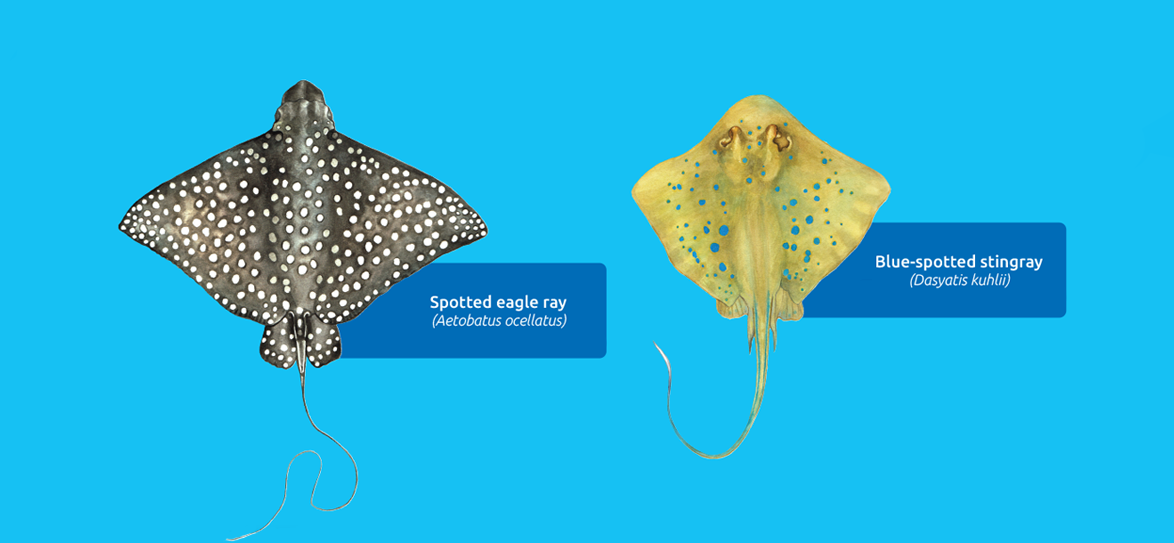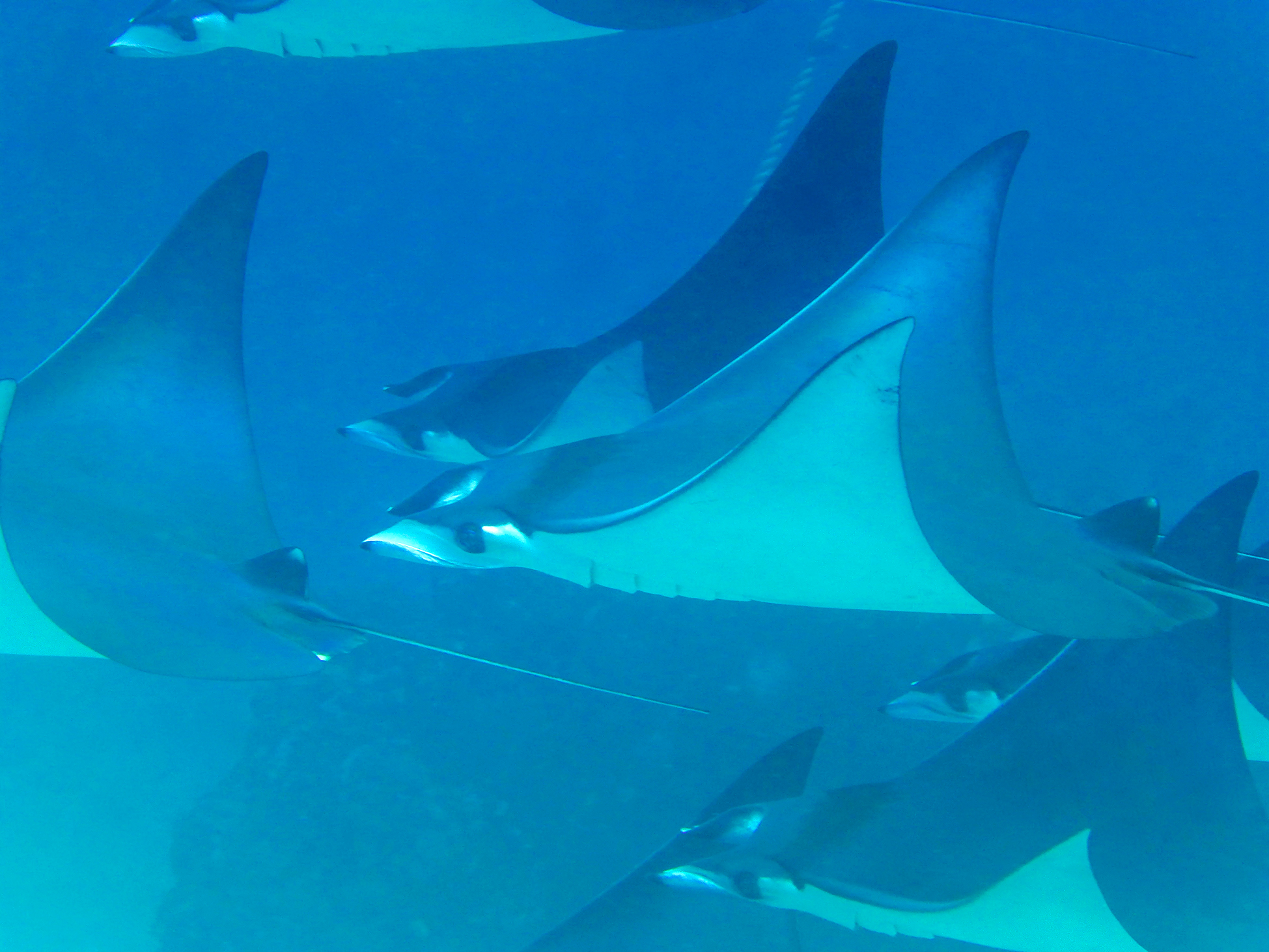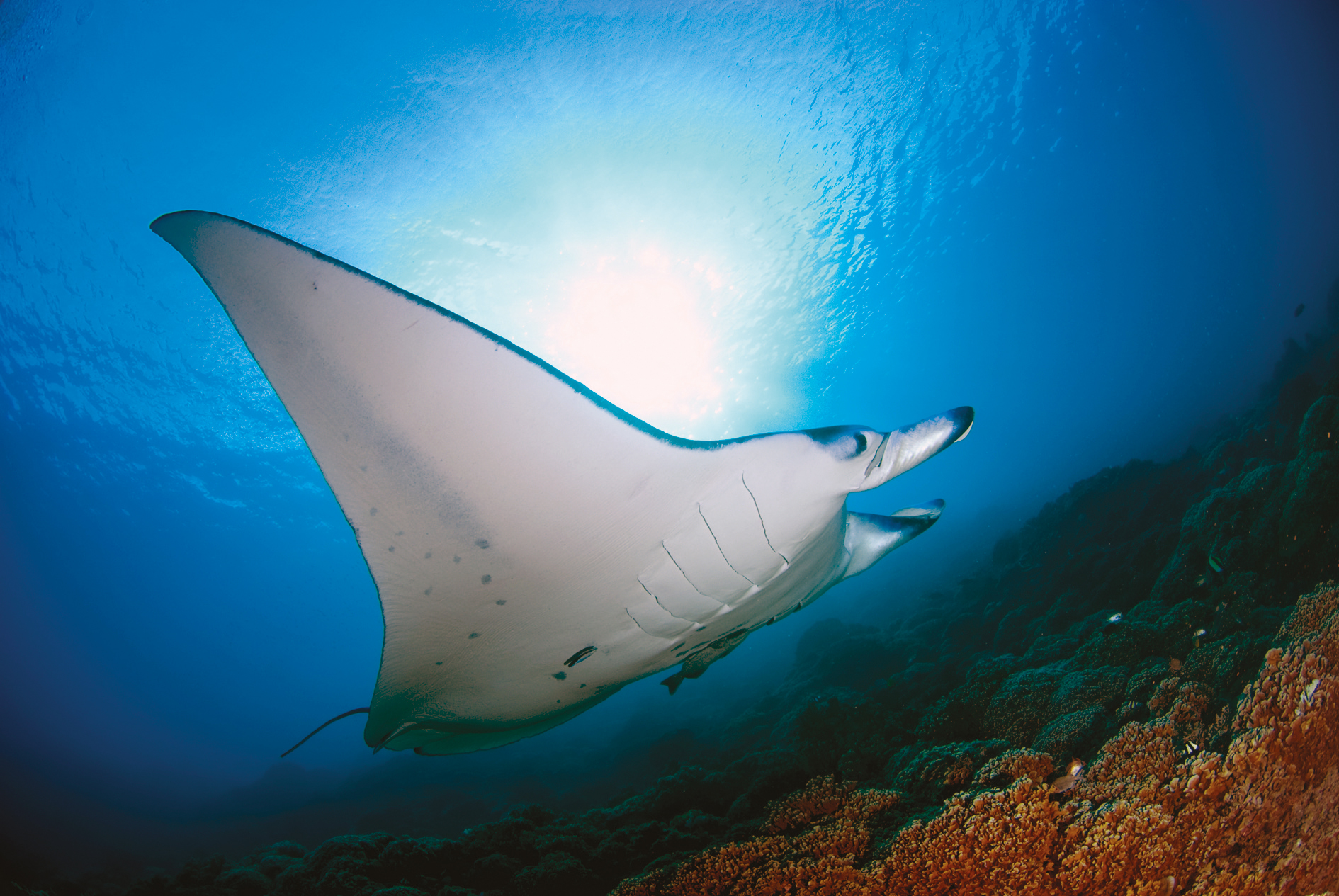Image: © Matthieu Juncker
To gain access to full information on rays and skates, download the information sheet produced by the LMMA Network and SPC.
Here are some priority actions the community can consider in addition to national regulations:
Fish smart rules
Tabu areas
Establish local no-fishing zones in areas where rays are known to gather. This restriction is suitable for species that are known by local fishers to gather in particular areas to breed. Many species of ray and skates form loose breeding aggregations.


Temporary bans
Ban fishing for rays at times when they gather to breed. This restriction is suitable for species that are known, by the community, to gather to breed at particular times of the year. Most species aggregate only once a year at a time that may be related to the lunar cycle.
Protecting marine ecosystems
Develop ecotourism based on stingray viewing. Many tourists will pay to observe stingrays in their natural habitat. Stingrays can become conditioned to be being fed at particular locations.

Good to know: size limits may not work for managing rays and skates populations
In most rays, females mature at a relatively large size and advanced age and this makes the application of size limits difficult. In addition, there is the danger involved in measuring a recently caught and flapping stingray.
Good to know: rays produce a small number of young each year
Because they grow slowly and produce only a small number of young each year, rays must not be heavily fished.
Fishing methods
Rays are caught using spears and baited hooks and lines. Like sharks, rays retain urea (a nitrogen compound present in the urine of many animals) in their blood and flesh, and have to be bled immediately after being caught and the meat washed and soaked.
Many species should be considered dangerous, as their barbs are venomous. However, most rays will swim away at the approach of someone wading in shallow water.
Some species

There are several hundred species of fish commonly known as skates, stingrays and eagle rays. They are similar to sharks in that they have a skeleton made of tough, elastic material rather than bone, but have flattened bodies and wing-like side fins (pectoral fins). These “wings” which provide most of the edible meat do not contain the soup needles (or finrays) found in sharks so they are not as sought after as sharks in the overfished sharkfin fishery.
Several species are used as food across the Pacific and the spotted eagle ray, Aetobatus narinari, and the blue-spotted stingray, Dasyatis kuhlii, are used here as examples. The spotted eagle ray, which has many white spots on a dark blue/green body and a wingspan width of 2.5 metres, is common throughout the entire tropical Indo-Pacific. The blue-spotted stingray, which has a brown body covered with light blue spots and reaches a width of 35 centimetres, is common in sandy patches on coral reefs across the western Pacific.
Most stingrays have one or more barbed stings covered with a thin layer of skin in which the venom is concentrated. In the past, some Pacific communities used stingray barbs to make heads for arrows and spears.
Most species are adapted for life on the sea floor and can take in water through large openings called spiracles, rather than through the mouth as most fish do. Most species feed on soft sandy sea floors though eagle rays often swim up in the water column, as do giant manta rays.
Most species have heavy, rounded teeth for crushing the shells of bottom-dwelling species such as sea snails, clams, oysters and crabs. They also eat worms, shrimps and some fish. The related manta ray, however, filters small animals (plankton) from the water.
The main predators of smaller stingrays in tropical waters are sharks and large species of fish.
Rays and skates have separate sexes and fertilisation is internal – that is, males transfer sperm to females which eventually either give birth to live young or lay large leathery eggs.
Males have two external sex organs called claspers located beneath the body. During mating, a male (♂) uses one of his claspers to transfer sperm into the opening (cloaca) of the female (♀).
In most species, the female carries the young within her body for around nine months before giving birth to up to 15 live young rays, which swim about and go hunting with their mother. In some species, notably the skates, the female lays leathery eggs on the sea floor. The eggs (sometimes called mermaids’ purses) hatch to juvenile rays that look like small adults.
Most rays and skates that have been studied grow slowly, and perhaps only one in ten juveniles survives the eight years or so required to reach sexual maturity. They have a lifespan of up to 30 years.
Related resources

To gain access to full information on rays and skates, download the information sheet.

